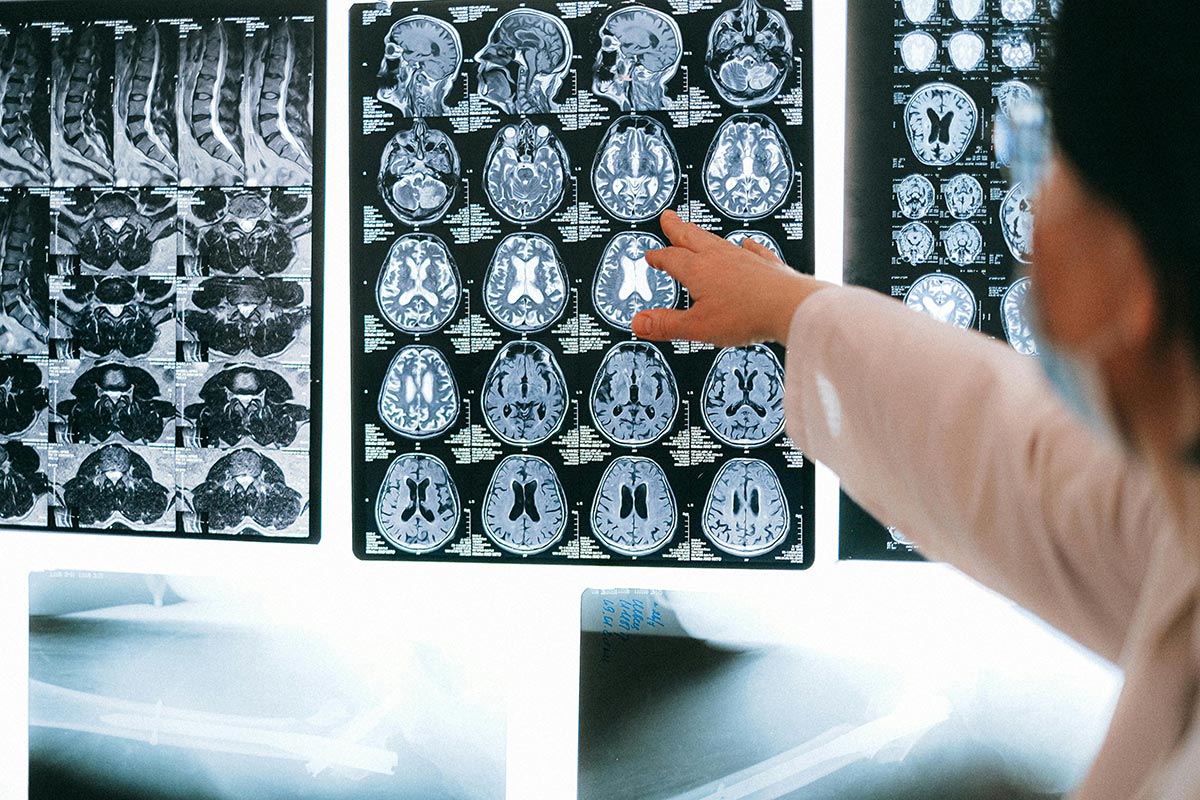
Understanding Co-Occurring Diagnoses
Connections Between Eating Disorders and Substance Use Disorders
The relationship between eating disorders and substance use disorders is both intricate and significant. Individuals diagnosed with eating disorders often face additional challenges related to substance use disorders, reflecting the interconnected nature of these conditions. For instance, research indicates that there are compelling correlations between conditions such as Anorexia Nervosa Binge Type and the use of psychostimulants, particularly when caloric restriction is severe [1].
Moreover, behaviors associated with Bulimia Nervosa, such as impulsivity and compulsion, are often exacerbated by genetic factors that also play a role in substance use disorders. This genetic link points to the necessity for specialized treatment strategies that consider both disorders simultaneously [1].
Disorder TypeCommon Co-OccurrenceAnorexia NervosaPsychostimulant abuseBulimia NervosaSubstance use disorderBinge Eating DisorderAlcohol abuse
Impact of Co-Occurring Diagnoses on Treatment
The presence of co-occurring eating disorders and substance use disorders complicates treatment significantly. Both conditions impact an individual's physical and mental health, necessitating a comprehensive approach. For instance, individuals with these dual diagnoses are at an increased risk for suicidality, which requires careful monitoring and assessment. This highlights the importance of integrated treatment models that address the multifaceted challenges posed by these disorders.
Integrated treatment approaches not only focus on the symptoms of each disorder but also on the underlying factors that contribute to their co-occurrence. A holistic strategy that involves both mental health professionals and substance use specialists can aid in developing a more effective treatment plan tailored to the unique needs of these individuals.
When addressing eating disorders in substance use treatment, it becomes essential to utilize comprehensive assessment tools and ensure that treatment is adaptable to various needs. This can improve outcomes and foster a supportive environment for recovery.
Prevalence and Statistics
Understanding the prevalence and statistics surrounding eating disorders and substance use disorders is crucial for effective treatment approaches. These statistics illustrate the significant overlap between these two conditions.
Statistics on Eating Disorders and Substance Use Disorders
The relationship between eating disorders and substance use disorders is notable, as a considerable portion of individuals with eating disorders also have a substance use disorder. The following statistics highlight this connection:
Eating Disorder TypePrevalence of Co-Occurring Substance Use DisorderAnorexia NervosaUp to 50%Bulimia Nervosa36.8%Binge Eating Disorder (BED)23.3%
It is essential to recognize that individuals with eating disorders are significantly more likely to engage in substance use. Research indicates that up to 50% of those with eating disorders report using alcohol or illicit drugs, which is five times higher than the rate in the general population. This information underscores the importance of addressing eating disorders in substance use treatment.
Rates of Comorbidity in the Population
The rates of comorbidity in the population further illustrate the interconnectedness of eating disorders and substance use. For instance, alcohol use disorder (AUD) appears to be the most common dual diagnosis found with binge-eating disorder (BED). Approximately 20% of individuals diagnosed with BED have a lifetime prevalence of AUD, which is 1.5 times higher than the prevalence in those without BED.
Individuals grappling with eating disorders may have a complex relationship with substance use; they might begin using substances before, simultaneously with, or after the onset of eating disorder symptoms. Understanding these rates is crucial for developing effective treatment methodologies that tackle both the eating disorder and substance use concurrently.
In summary, the statistics observed in the prevalence of co-occurring disorders emphasize the necessity for integrated approaches to treatment. By acknowledging the significant overlap and addressing these concerns holistically, healthcare providers can improve outcomes for individuals experiencing these challenging conditions.
Behavioral Associations and Risk Factors
Understanding the behavioral associations and risk factors that connect eating disorders (EDs) and substance use disorders (SUDs) is crucial for effective treatment. These issues often coexist, influencing each other in a complex manner.
Common Risk Factors for Eating Disorders and Substance Use Disorders
Both eating disorders and substance use disorders share a range of common risk factors. These factors can significantly increase the likelihood of an individual developing either condition. The following table summarizes some of the most notable contributing factors:
Risk FactorDescriptionGenetic FactorsFamily history may predispose individuals to both EDs and SUDs.Family HistoryA family background of either EDs or SUDs can elevate risk.Psychological IssuesLow self-esteem, depression, and anxiety are prevalent in both conditions.Compulsive BehaviorIndividuals may exhibit compulsive tendencies, impacting control over eating and substance consumption.TraumaExperiences of trauma, such as abuse or neglect, can lead to both disorders.Social PressuresSocietal expectations regarding body image and substance use can drive these behaviors.
The factors above demonstrate how intertwined the risk profiles for EDs and SUDs can be. Environmental factors, like cumulative childhood trauma, also heavily influence development. Factors such as poor paternal education and maternal concern about appearance contribute to susceptibility.
Behavioral Associations Between Eating Disorders and Substance Use
The overlap in behaviors between individuals struggling with EDs and those with SUDs presents significant challenges in treatment. Key behavioral associations include:
Research indicates that there is a common neurobiological process that connects both disorders, including disturbances in neurotransmitter functions like dopamine and serotonin, contributing to their addictive qualities [3].
Addressing these shared behavioral patterns and risk factors is crucial in addressing eating disorders in substance use treatment. It allows for a more comprehensive approach tailored to the individual needs of clients facing both challenges. Recognizing the intricate connections between these disorders can lead to more effective therapeutic interventions and improved long-term outcomes.
Treatment Approaches
Addressing eating disorders in substance use treatment requires a comprehensive understanding of the unique challenges posed by co-occurring disorders. Effective treatment often involves individualized plans and integrated care strategies tailored to each individual's needs.
Individualized Treatment Plans
Individualized treatment plans are essential for those facing both substance use disorders and eating disorders. An effective approach recognizes the interaction between these disorders and the specific circumstances of the individual. Treatment plans may need to account for longer and more complex approaches due to this interplay. Research suggests that when substance use is connected to eating disorder symptoms, understanding this relationship is crucial for successful interventions [2].
Here's a breakdown of factors to consider when creating individualized treatment plans:
Factors to ConsiderDescriptionSubstance Use HistoryDocumenting the type and extent of substance useEating Disorder DiagnosisIdentifying the specific eating disorder and its symptomsCo-occurring ConditionsReviewing any additional mental health issuesPersonal PreferencesRespecting the individual’s treatment preferencesFamily SupportInvolving family members in the treatment process
Integrated Care for Co-Occurring Disorders
Integrated care is pivotal in effectively managing co-occurring substance use and eating disorders. This approach combines various therapeutic methods to address both disorders simultaneously, ensuring that all aspects of the individual's mental health are treated in a cohesive manner. Integrated care can enhance recovery by fostering collaboration between mental health professionals, nutritionists, and addiction specialists.
In this model, various treatment modalities might be utilized, including:
The complexity of the relationship between addiction and eating disorders necessitates such integrated approaches, allowing for tailored and effective care pathways that enhance overall well-being. By employing these treatment approaches, individuals can achieve more favorable long-term outcomes and improve their chances of lasting recovery from both eating disorders and substance use issues.
Challenges in Simultaneous Treatment
Individuals facing both eating disorders and substance use disorders encounter unique challenges in their treatment process. Addressing these challenges requires a comprehensive understanding of the physical impacts and the complexities involved in managing both mental health and substance use.
Addressing Physical Impacts
The simultaneous treatment of eating disorders and substance use disorders presents difficulties due to their significant physical effects on the body. Individuals often experience malnutrition and metabolic disturbances, which can complicate the treatment process. Research indicates that treating the eating disorder first is frequently advisable, allowing the individual to engage in substance use treatment from a more stable and nourished state [1].
Here's an overview of physical impacts that may arise in individuals with co-occurring disorders:
Physical ImpactDescriptionMalnutritionResulting from restrictive eating behaviors, leading to various health complications.Electrolyte ImbalanceCan occur due to purging behaviors and substance misuse, which can lead to severe health risks.Organ DysfunctionProlonged substance abuse and disordered eating can damage essential organs like the heart and liver.Hormonal ChangesDisruptions in regular hormonal function due to inadequate nutrition and substance use.
The physical health of individuals needs to be prioritized, as it directly influences the ability to engage in effective treatment for both disorders.
Managing Mental Health and Substance Use
The co-occurrence of eating disorders and substance use disorders often leads to increased impulsivity and compulsive behaviors, with genetics and neurobiology playing critical roles in both conditions. Data suggests that up to 50% of individuals with eating disorders abuse alcohol or illicit drugs, a rate significantly higher than the general population [2]. Furthermore, those suffering from substance use disorders are ten times more likely to have an eating disorder than the general population.
Addressing eating disorders in substance use treatment is essential due to the high prevalence of co-occurring psychiatric and medical issues [4]. An effective treatment plan must consider the interaction between these disorders, necessitating an individualized approach [2].
Challenges in managing mental health and substance use include:
ChallengeDescriptionImpulsivityIncreased risk of harmful decisions influenced by both disorders.Emotional RegulationDifficulty managing emotions can exacerbate both eating disorders and substance abuse.Relapse RiskHigher likelihood of relapse when addressing one disorder without treating the other simultaneously.
An integrated care model is critical for achieving optimal outcomes in individuals facing these intertwined challenges.
Long-Term Outcomes and Recovery
Understanding the long-term outcomes and recovery rates for individuals with co-occurring eating disorders and substance use disorders (SUDs) can significantly influence treatment strategies.
Prognosis for Different Eating Disorder Diagnoses
The prognosis varies significantly among different types of eating disorders. Recent research has shown that individuals with anorexia nervosa have a mortality rate five times higher than the general population. Additionally, those with bulimia nervosa are 50% more likely to die prematurely compared to the general population.
Among the various eating disorder diagnoses:
Eating Disorder TypeMortality RateLong-Term PrognosisAnorexia Nervosa5 times higher than general populationPoor prognosis, higher risk of relapseBulimia Nervosa50% more likely to die prematurelyVaried prognosis, still serious riskBinge Eating Disorder (BED)Lower mortality rateMore favorable long-term outcomes, effective treatment options
Individuals with restrictive-type eating disorders, such as Anorexia Nervosa (AN), have shown the poorest prognosis when compared to other conditions. Within AN, those who engage in binge/purge behaviors (AN-BP) carry a higher risk of relapse than those with a restrictive subtype (AN-R). In contrast, long-term outcomes for individuals with Binge Eating Disorder (BED) have been reported to be more favorable, with effective psychotherapy and behavioral interventions showing success in treatment [5].
Effectiveness of Integrated Treatment Approaches
Addressing eating disorders in substance use treatment requires a comprehensive and integrated approach. Both disorders share common neurobiological processes, which include disturbances in neurotransmitter functions such as dopamine and serotonin [3]. This shared neurobiological foundation contributes to the addictive potential of substances and highly palatable foods, thus influencing treatment strategies.
Integrated treatment approaches are crucial for improving outcomes for individuals with co-occurring disorders. These approaches focus not only on the symptoms of eating disorders but also on substance use behaviors, providing a cohesive treatment framework that addresses both aspects simultaneously.
Studies have shown that individuals undergoing integrated treatment report better prognosis and lower relapse rates. By addressing both the eating disorder and substance use disorder concurrently, patients develop more effective coping strategies and foster greater emotional regulation, significantly improving their quality of life and recovery prospects.
In conclusion, understanding the prognosis for different eating disorders and employing integrated treatment approaches are vital for effective recovery and long-term outcomes for individuals facing these challenges. For more insights, consider exploring articles on related topics such as addressing body image issues in substance use treatment or addressing sexual dysfunction in substance use treatment.
References
[2]:
[3]:
[4]:
[5]:
.svg)





